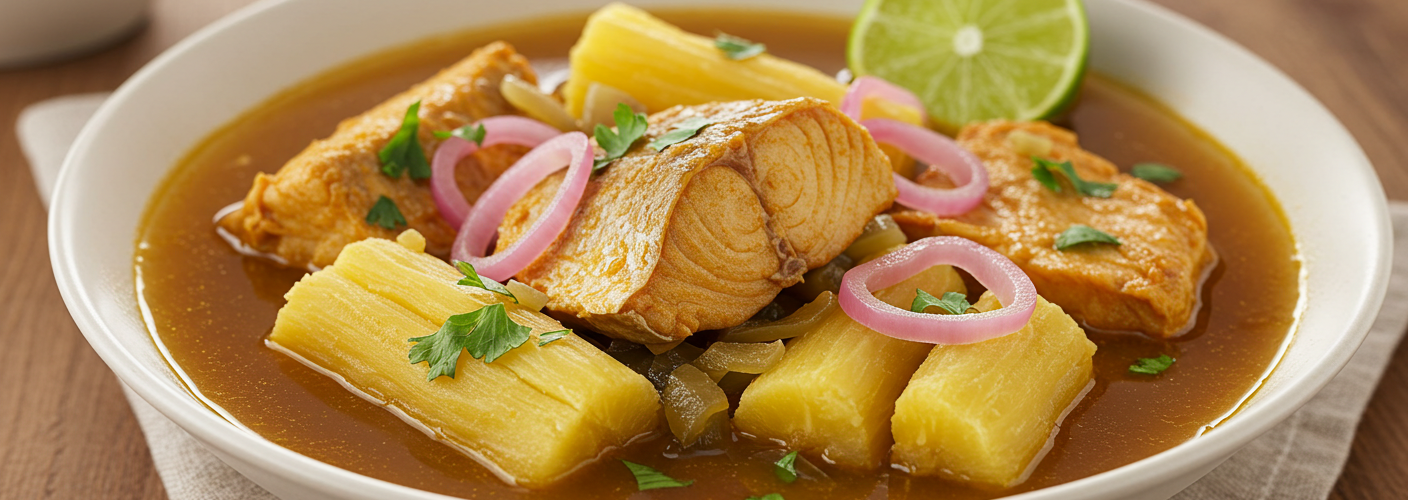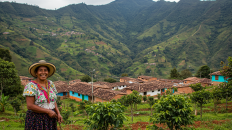Encebollado is more than just a dish; it is a culinary emblem of Ecuadorian culture that boasts a rich amalgamation of flavors and traditions. This fish stew, typically made with freshly caught fish, cassava (also known as yuca), and pickled red onions, has become a beloved meal among locals and visitors alike.
Originating from the coastal regions of Ecuador, encebollado is often enjoyed as a hearty breakfast, though it can be savored at any time of day. Its name is derived from “cebolla,” the Spanish word for onion, highlighting one of its key ingredients – the pickled red onions, which add a delightful tanginess to the stew.
The Main Ingredients
At the heart of encebollado is the fish, which is often a white, flaky type such as albacore tuna or similar varieties. The flesh is cooked until tender and then shredded into bite-sized pieces, allowing it to absorb the rich broth’s flavors. The broth itself is a tantalizing mix, typically crafted with a combination of fish stock, garlic, cilantro, and spices that provide depth and warmth to each serving.
One of the highlight ingredients in this stew is cassava. Often confused with potatoes, cassava is a starchy tuber that lends a unique texture and serves as a perfect complement to the flaky fish. Its heartiness makes the dish filling, ensuring that it satisfies the hunger of anyone who indulges in it.
Finally, the pickled red onions serve not only as a garnish but also as a vital component that elevates the overall dish. Their acidity adds brightness and balances the flavors, enhancing the stew’s taste and appealing to the palate. The onions are usually quickly pickled in a mixture of vinegar, salt, and sometimes a sprinkle of sugar, making them crunchy and flavorful.
A Culinary Tradition
Encebollado has deep roots in Ecuador’s history, with influences from Indigenous cooking as well as Spanish colonial practices. It’s a dish that reflects the country’s connection to the ocean; fishing communities have long depended on the sea for sustenance. Today, it’s commonly found in local markets, roadside stands, and restaurants, often served with a side of aji (a spicy sauce) and lime to add an extra kick.
In many households, encebollado is a recipe passed down through generations. Each family may have its own variation, adjusting spices and ingredients to suit personal tastes. Whether enjoyed at a street food stall or a family gathering, this stew provides not just nourishment but also a sense of community and heritage.
How to Enjoy Encebollado
While encebollado can be enjoyed on its own, it is often served alongside accompaniments such as avocado slices, steamed corn, or even ripe plantains, which add to the dish’s texture and flavor profile. Sipping on a refreshing glass of fruit juice, like maracuyá (passionfruit) or guanabana, completes the experience perfectly.
In conclusion, encebollado is a culinary treasure that encapsulates the spirit of Ecuador. Its robust flavors, warm textures, and rich history make it a must-try for anyone wishing to explore the diverse world of Ecuadorian cuisine. Whether you’re sampling it in Ecuador or attempting to recreate this delightful stew at home, encebollado promises to take you on a flavorful journey through the heart of Ecuador.




Add comment